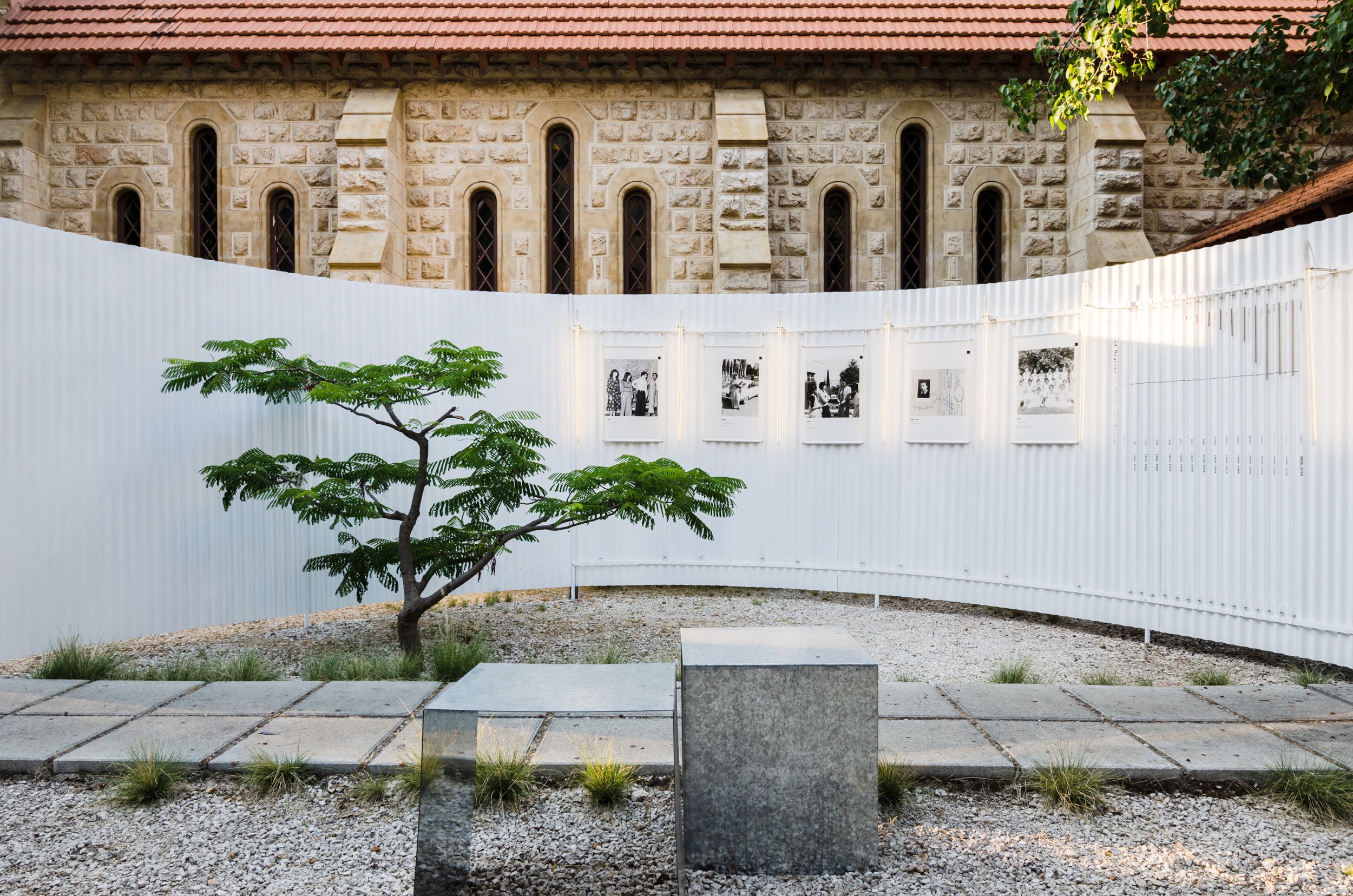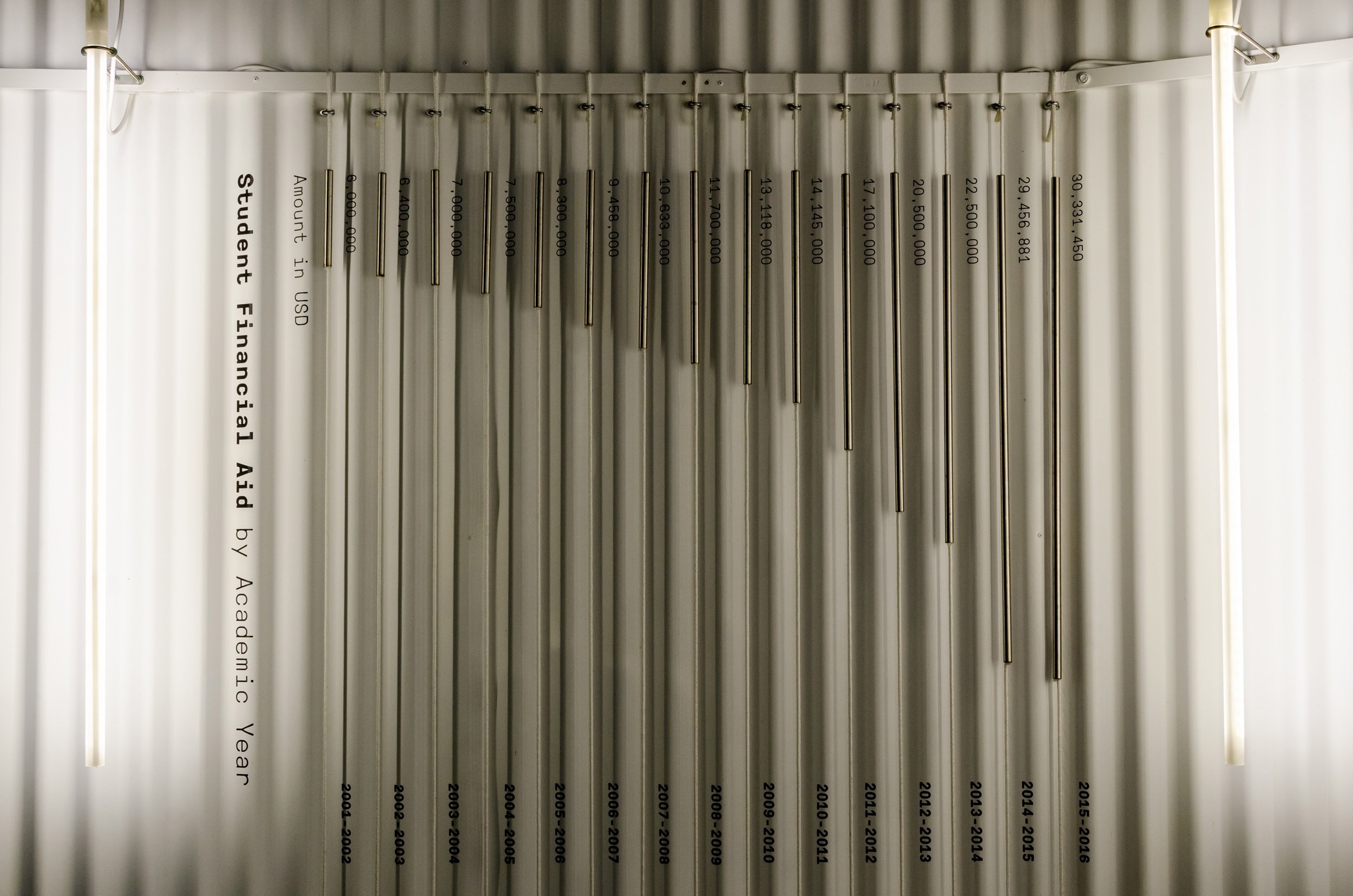genus: nation gender status_ 150th Anniversary of the American University of Beirut
Assembly Hall Garden Pavilion, Beirut, Lebanon_ 17.05.2016/17.12.2016
Commissioned by the AUB President›s Club
Our ability to perceive comes in harmony with our aptitude for classification. At the time of the inception of the Syrian Protestant College in 1866, Darwin’ s Theory of Evolution by Natural Selection had recently been published amidst a highly critical scientific community. The theory discussed common lineages amongst the different species of beings found in nature, and the diversity that arose from its fundamental course. The curiosity to learn from nature by documentation was mirrored by a desire to learn from the other, paving the narrow yet persistent path towards tolerance and mutual understanding. As the lighthouse escorted ships to safe harbor, the American University of Beirut guided the progression of open mindedness in Lebanon and the Region. Its founder, Daniel Bliss, proclaimed the then College “ for all conditions and classes of men without regard to color, nationality, race or religion.”
At the turn of the century, before many prestigious North American institutions including Harvard and the University of Virgina, AUB would declare itself a co-educational establishment, for all conditions and classes of human beings, regardless of nation, gender, or status. Today, the American University of Beirut remains a symbol of unity through diversity, despite the turbulent times of war and occupation it has rigorously confronted.
On the occasion of its 150th year, a pavilion is constructed to commemorate defining moments in the course of AUB’ s history of inclusion. A medley of images and statistical information portray the diversity within the university’ s student body and the constantly amplifying struggle to include all who wish to learn.
The Pavilion
A pavilion is an experience.
It is a flexible architectural open space that invites people to come and spend time in it.
It is a temporary structure, the function of which could potentially change.
The pavilion site integrates the exhibition within the campus grounds, with the intention of making it porous and part of the daily walk. The pavilion is a sweeping white ribbon of tin shaped by the existing nature of the Assembly Hall Garden. By visually cropping the two oldest structures at AUB, the pavilion highlights the architectural history of the campus with a contemporary assertiveness, while maintaining a perpetual organic flow of visitor circulation.
The exhibition becomes a fragment of space that allows the playful daylight to shape its presence and content by day, and a sequence of subtle luminosities to bend in its wake by night. The concave spaces of different scales create an experience of varying levels of intimacy. Tangents that extrude between different semi-circular geometries tie the spaces to one another. The viewer moves through these alternating spaces, constantly exposed to the content on the one hand, and the campus on the other. The pavilion understands time through its own physical fragments, embodying time› s continuous framework within its historical context. The gesture has neither a beginning nor an end. It has neither a front nor a back. It is as continuous as time.
Comimissioned by the American University of Beirut President’s Club
Design _GHAITH&JAD
Graphics _Christian Moussa
Production _AUB




















